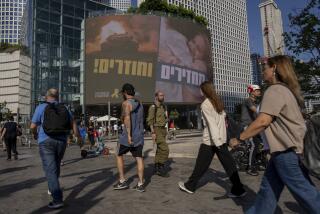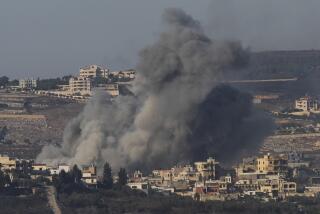Hope and rage in Gaza
THE ISRAELI ARMY’S REMOVAL of Jewish settlers from Gaza on Thursday produced scenes of pure emotion: families weeping at the forced abandonment of their homes of 20 years, Palestinians cheering at recovery of their occupied land. So far, security forces have done a good job in keeping protests and celebrations largely nonviolent. If the pattern holds, it can be a template for Israeli withdrawal from more West Bank settlements, and a renewed opportunity for Palestinian self-government.
Some Israeli soldiers wept when removing settlers, but they followed the orders of their democratically elected government, reflecting their training and discipline, and Israel’s commitment to the rule of law. Increasing numbers of soldiers are observant Jews; Israel’s concern over whether they would follow eviction orders led some to be replaced by more secular soldiers. Police and soldiers negotiated with settlers and persuaded many to leave without even passive resistance. The bigger problem came from protesters living outside Gaza who slipped past blockades in recent weeks and took shelter in homes and, on Thursday, in synagogues in Kfar Darom and Neve Dekalim. They spit on and, in one case, poured acid on soldiers before being frog-marched out.
Thousands of Israeli troops carried out the evacuation. The army has been guarding the 8,500 settlers living among 1.3 million Palestinians in Gaza on land that Israel seized from Egypt in the 1967 war. The soldiers will leave in coming weeks, settlers’ homes will be demolished, and Israel will be spared having so many guard so few at such high cost.
The withdrawal will also enable Israel to remain Jewish and democratic. With the rapid population growth in the occupied territories and among Israeli Arabs, Israeli leaders have long dreaded the prospect that a Jewish minority controlling the West Bank, Gaza and Israel proper would rule an Arab majority. In that case, Israel could be forced to decide whether to remain either a Jewish state or a democracy.
In Gaza, the Palestinian refugee camps and slums in the narrow territory alongside the Mediterranean have been fertile ground for Hamas, which runs schools and kitchens and kills Israeli civilians. Since Mahmoud Abbas succeeded the late Yasser Arafat as president of the Palestinian Authority this year, he has tried to bring Hamas into the political process but has not persuaded it to forswear violence.
The Palestinian Authority needs to exert control over Gaza and stop it from becoming a launching pad for rockets and terrorists preying on Israel. A peaceful Gaza can give Israel confidence to withdraw from other settlements in the West Bank besides the four small ones it left while withdrawing from Gaza. The West Bank and Gaza are to become a Palestinian state, but the borders have yet to be determined. It was in the West Bank, not Gaza, where the worst violence occurred this week -- a settler shot four Palestinians to death Wednesday.
The historic withdrawal is Israel’s first from land on which Palestinians hope to build their state. The Bush administration has applauded Israeli Prime Minister Ariel Sharon’s bold change of decades-long policy; it has also demanded that Gaza not be the first and last withdrawal. Condoleezza Rice has been a frequent visitor to Israel and the Palestinian territories since becoming secretary of State this year; it’s a trip she will have to make many more times, pushing both sides toward renewed negotiations on the many issues that still divide them.
More to Read
Sign up for Essential California
The most important California stories and recommendations in your inbox every morning.
You may occasionally receive promotional content from the Los Angeles Times.










